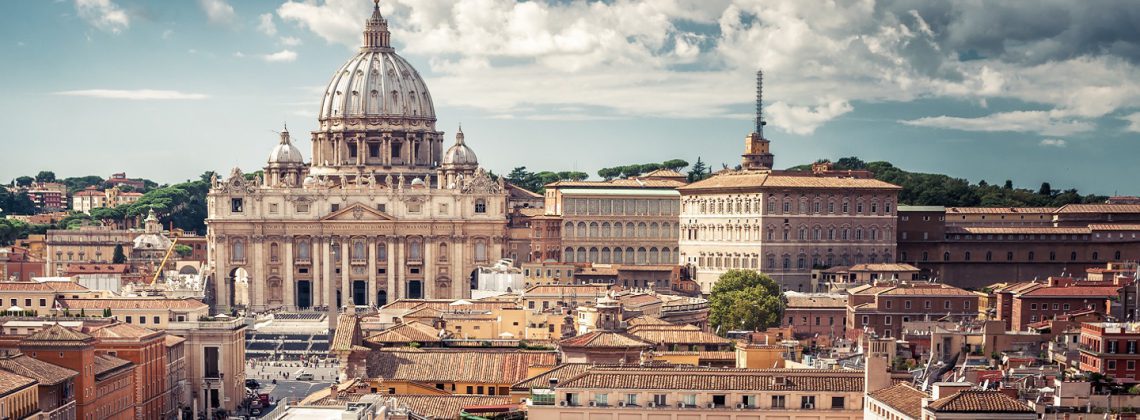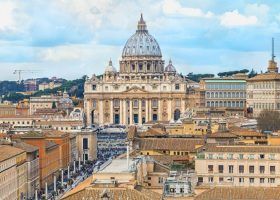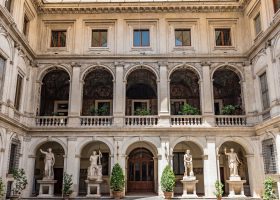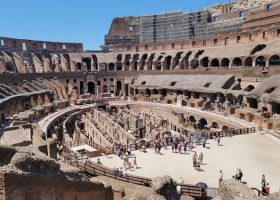How can one see all that Rome has to offer? From Trevi Fountain and the National Rome Museum to the Pantheon and the Colosseum, Rome is an ever-giving city of magnificent works. Let’s look at 19 of Rome’s most iconic art and architecture to make the most of your Rome trip!
This article isn’t meant to replace a guided visit—quite the opposite! Reading up on an attraction will make a guided tour more memorable and interesting! You will impress your travel partners and engage more with the guide. Check out our dedicated guide to planning your visit to Rome, which has everything you’ll need, and our top-rated Rome tours.
19 of the Eternal City’s Artistic & Architectural Must-See Highlights
You’ve probably heard the old saying that a lifetime is not enough to see Rome. For sure, we could all take 1,000 “trips of a lifetime,” find unique artistic and cultural experiences, and still barely scratch the surface of all the art and architecture Rome has to offer.
Thus, Rome’s fame as the “Eternal City” is well-founded. For instance, over the centuries, other cities claimed to be the next Rome (Constantinople or modern Istanbul and Moscow are two examples). But obviously, no city boasts the claim to ancient Rome’s legacies more than Rome itself.
Our world owes much not just to ancient Roman legacies but also those from papal and Renaissance Rome. Indeed, one of Rome’s enduring gifts to us comes from the city’s amazing art and architecture. Below, we’ll explore 19 iconic examples of Rome’s art and architecture.
So, let’s begin!
19. Basilica of St. John Lateran
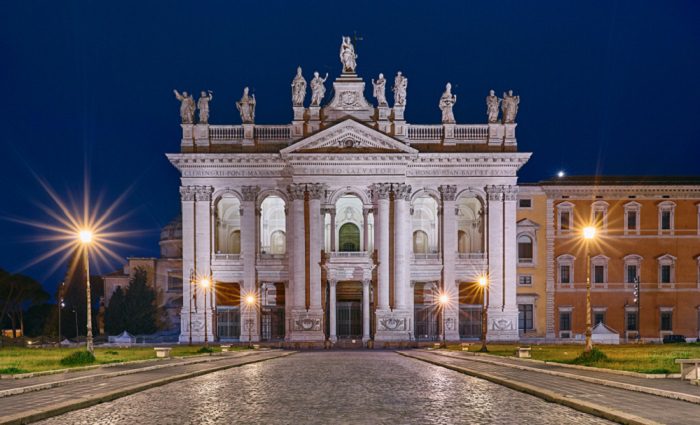
Rome’s Cathedral | Papal Seat | Constantine
Before St. Peter’s and the Vatican City, no holy site in Rome rivaled the Basilica of St. John Lateran. In fact, scholar Lex Bosman tells us this is the world’s earliest cathedral.
Today this basilica remains Rome’s main cathedral and the seat of the Bishop of Rome (aka the pope). If you thought the Vatican was the home of the popes, you’d be right. However, this church is still a big deal since the pope still officiates an annual service here as his official seat.
Until 1870 AD, this was where popes were crowned. At that time, to be a pope meant being more than the spiritual leader of the Roman Catholic Church. In fact, popes also ruled Rome and some surrounding territory.
The basilica sits on land confiscated from the Laterani family in 65 AD by Emperor Nero. However, the basilica itself originally dates to the days of Emperor Constantine in the 300s. Moreover, scholar John Fort explains the structure has been rebuilt and renovated on many occasions.
How to get to: Basilica of St. John Lateran
18. Pyramid of Caius Cestius & the Protestant Cemetery
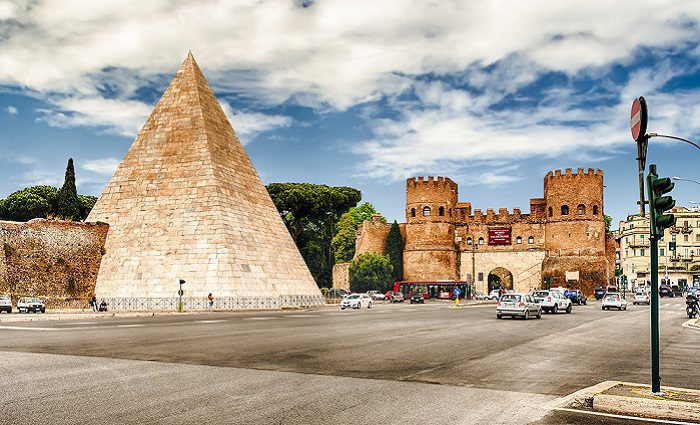
Pyramid | Grand Tour | Literary Giants
A pyramid in Rome? Yes, the city boasts a small-scale tomb inspired by those across the Mediterranean in Egypt. Scholar George Sullivan says we don’t know much about 1st-century-BC Roman magistrate Caius Cestius.
But Caius Cestius made sure we would remember his tomb. Set into the Aurelian Wall near the Porta San Paolo, Caius Cestius’ likely got the idea because Romans could not get enough of Cleopatra and all things Egypt. (Try counting how many Egyptian obelisks you see in Rome!)
Nearby you’ll find the Protestant Cemetery (also called the Non-Catholic Cemetery). The cemetery is a who’s who of famous people from the days of the Grand Tour. Historian Eric G.E. Zuelow explains the Grand Tour of the 1700s is a forerunner of today’s tourism industry, where many young people visited cities across Europe. However, Rome was the premier destination for any Grand Tourist.
Walking through the cemetery, you’ll find the final resting place for several famous literary and artistic figures, including poet Jonathan Keats and the ashes of Percy Bysshe Shelley. Don’t miss the much-replicated sculpture, Angel of Grief, by American artist William Wetmore Story.
How to get to: Pyramid of Caius Cestius and the Protestant Cemetery
17. Mouth of Truth
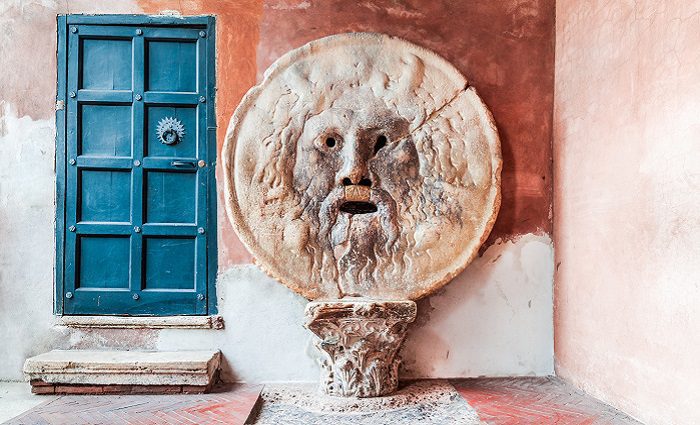
Mystery | Legend | Film Star
Some people believe this is just a tourist trap. But the so-called Bocca della Verità (Mouth of Truth) and its surroundings count among Rome’s great artistic and architectural gems. So, what is the Mouth of Truth?
Scholars have long debated the origins of this bearded face carved into a marble disc. However, John Fort explains that most now believe it is likely an ancient manhole cover or part of a fountain. It’s fame comes partly from the legend that says the mouth will shut on the hand placed inside of anyone with the audacity to tell a lie.
Made famous by Gregory Peck’s character in the movie Roman Holiday, visitors have been lining up for a pic ever since. You’ll find it today in a portico of the Church of Santa Maria in Cosmedin. Moreover, the church itself, which dates to the medieval period should not be missed.
Nearby you’ll also find several well-preserved ancient Roman temples. For instance, art historian Penelope J.E. Davies tells us these temples, including the circular Temple of Hercules, date to the days of the Roman Republic. In fact, the Mouth of Truth may have originally formed part of one of these temples!
How to get to the Mouth of Truth
16. MAXXI
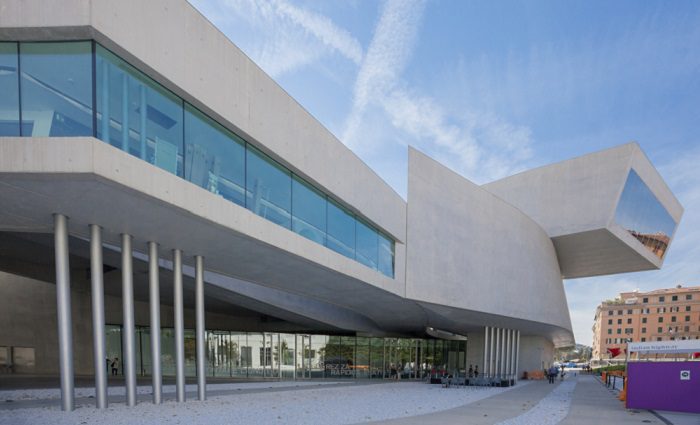
Modern & Contemporary Art | Zaha Hadid | Futuristic
You might think you’re in the wrong city if ancient ruins and renaissance/baroque art aren’t your thing. But Rome also boasts an array of modern and contemporary art museums. And the MAXXI tops the list.
Showcasing Italian and international artists, the MAXXI or National Museum of 21st Century Arts was completed in 2009. Exhibition spaces generally have a lot of interactive and immersive experiences.
The museum’s futuristic design is the creation of the late British-Iraqi architect Zaha Hadid. This visionary woman’s proposal won over the judges, and the innovative architecture and layout still wows visitors today. Modern and contemporary art enthusiasts can also check out the MACRO branches at Via Nazionale and Testaccio.
How to get to: MAXXI
15. Tempietto di Bramante
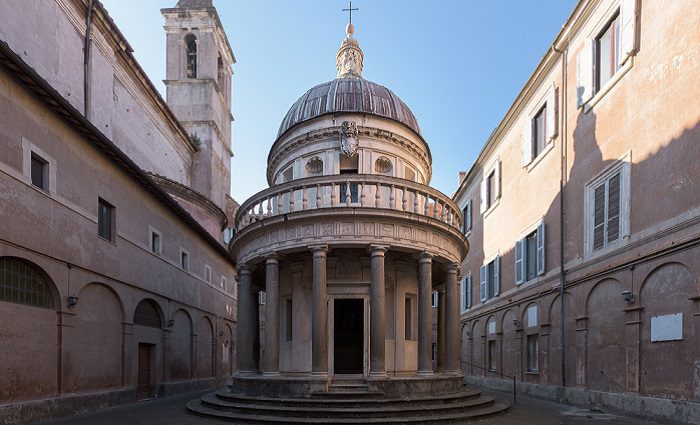
San Pietro in Montorio | Bramante | Martyria
An overlooked spot in Trastevere—a neighborhood full of authentic Roman experiences—is the Tempietto (little temple). It stands in the courtyard of the Church of San Pietro in Montorio. Designed by architect Donato Bramante, the Tempietto dates to the early 1500s.
The Tempietto is among the top examples of Renaissance art and architecture in Rome. Moreover, Bramante’s inspiration, according to art historian Jack Freiberg, came from early Christian martyria—chapels built on the site of a saint’s martyrdom.
How to get to: Tempietto di Bramante
14. National Roman Museum: Palazzo Massimo alle Terme
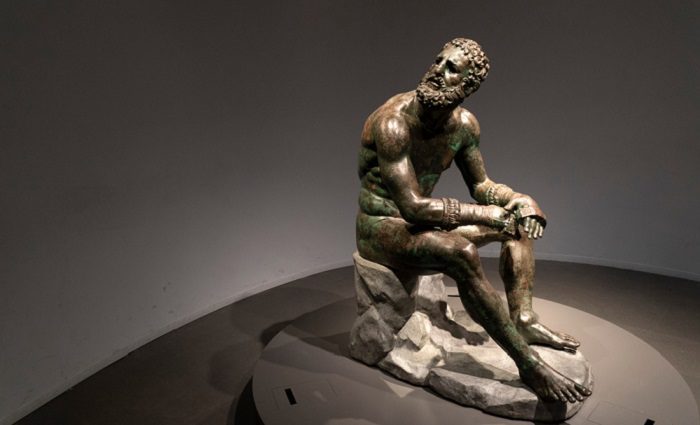
Classical Art | Frescoes | Statuary
One of the world’s best museums for classical art, the National Roman Museum has five branches including Palazzo Massimo. Highlights include stunning frescoes from Livia’s (wife of Augustus) villa.
In terms of statuary, there is a trove of Roman and Greek pieces. For instance, art historian Marina Sapelli says you’ll find a portrait of Emperor Augustus as pontifex maximus. However, the showstopper is the 1st century BC Greek bronze known as the Boxer at Rest or the Terme Boxer.
Learn more about this piece and other must-see sculptures from around the world!
How to get to: National Roman Museum
13. The Art of the Passeggiata
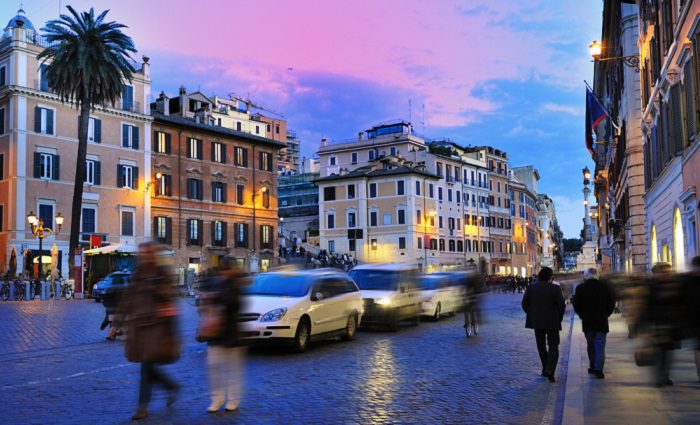
When in Rome | Communal Activity | Hidden Gems
A favored communal pastime in Rome is the evening (especially weekend) passeggiata. Some say Romans have this leisurely stroll down to an art. However, it is more than just a pleasant walk. In fact, an evening passeggiata for locals and visitors alike is an opportunity to do some window shopping, people watch, grab some gelato, and just enjoy a pleasant night.
Following a preferred route along Via del Corso is a great way to check out many attractions. For instance, you can take detours to see the Trevi Fountain or Spanish Steps.
You could also see Piazza Venezia and the monument to Italy’s first king, the Vittoriano. However, George Sullivan explains some prefer to call it the “typewriter” or “wedding cake.” Staying on the Corso, look out for the Palazzo Doria Pamphilj, home to one of the city’s great private art collections.
At the same time, your passeggiata allows you to seek out your own favorite hidden gems. For example, take a walk down some tiny alleys. Whether you’re struck by a tiny church or a decorative façade of an apartment building, you are bound to find something that will leave you in awe.
12. The Great Synagogue of Rome
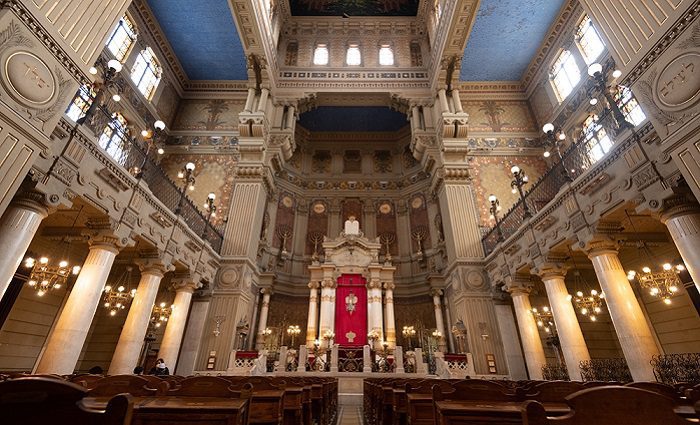
Ancient Community | Art Nouveau | Local History
The Great Synagogue towers over the Ghetto—one of Rome’s great cultural and culinary neighborhoods. Art historian Dana Katz tells us it dates to the 1890s, not long after the city’s Jews gained Italian citizenship. Moreover, this period marked the end of centuries of oppression for Rome’s Jewish community that had been restricted to this area by the papacy in the 16th century.
Built by architects Vincenzo Costa and Osvaldo Armanni, the building bears eclectic and art nouveau architectural styles. Moreover, the museum in the basement tells us the story of Rome’s ancient and resilient Jewish community.
In fact, Katz explains Rome’s Jewish community is the oldest in the world outside of the Holy Land. The museum also contains a wealth of artifacts and records tracing the history of Rome’s Jewish community. Both the Spanish Synagogue and the main Synagogue on the upper level are still in use.
While you’re here, pop across Rome’s oldest bridge Ponte Fabricio and explore the tiny island in the River Tiber!
How to get to: Synagogue of Rome
11. Baroque Rome
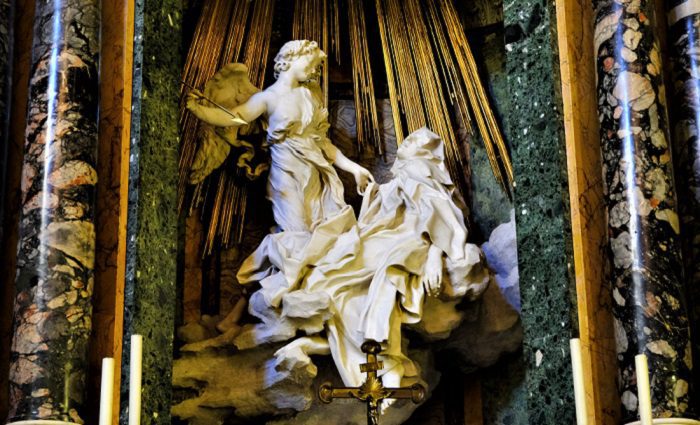
Bernini | Borromini | Ecstasy of Saint Teresa
If Florence is defined by Renaissance art, Rome is celebrated for the ornate styles of baroque. Thanks to artists and architects like Gian Lorenzo Bernini and Francesco Borromini, walking through Rome is like a living art history class in baroque highlights.
Baroque art emerged as the symbol of the counter-reformation. Arguably nothing is as synonymous with baroque as Bernini’s famous sculpture The Ecstasy of Saint Teresa.
Art historian Jonathan Unglaub explains Bernini’s Ecstasy of Saint Teresa forms the devotional core of the Cornaro Chapel in the Church of Santa Maria della Vittoria. Moreover, Elizabeth Munro tells us the Ecstasy of Saint Teresa is a creative extravaganza.
One element that distinguishes this piece is that it is not just a work of sculpture. In fact, as art historian Ian Chilvers points out, Bernini incorporated sculpture, architecture, and painting to create a deeply pious and moving experience.
Bernini also graced Rome with several beautiful fountains. For example, you’ll find the most famous of these (the Fountain of the Four Rivers) in Piazza Navona. Finally, Bernini’s rival Borromini designed several highlights, including the interior of St. John Lateran and the Church of Sant’Ivo alla Sapienza.
How to get to: Church of Santa Maria della Vittoria and Piazza Navona
10. Square Colosseum
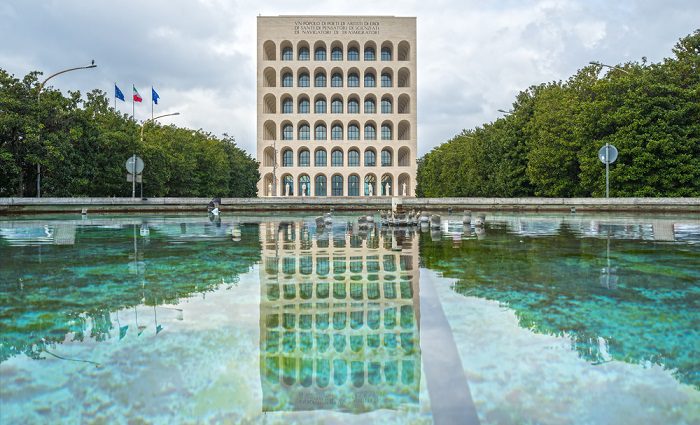
EUR | Quirky | Fendi
Officially called the Palace of Italian Civilization, the Square Colosseum boasts a quirky history. For starters, it began life as a project funded by Mussolini’s Fascist regime in Rome’s EUR neighborhood. In fact, the Square Colosseum’s initial purpose involved a World’s Fair destined to never happen because of WWII.
If the building’s arches remind you of a certain iconic Roman landmark, your eyes are not deceived. Indeed, historian RJB Bosworth tells us the architects designed the Square Colosseum as a modern update that would link Fascist Italy’s achievements with those of Ancient Rome and the Colosseum. However, the building has long outlived the regime behind its construction.
Today, the Square Colosseum houses the headquarters of the world-famous fashion brand Fendi and an exhibition space. It’s also been dubbed the “most depressing building,” yet that just adds to its intriguing appeal.
9. Urban Planning: Rome’s Piazze
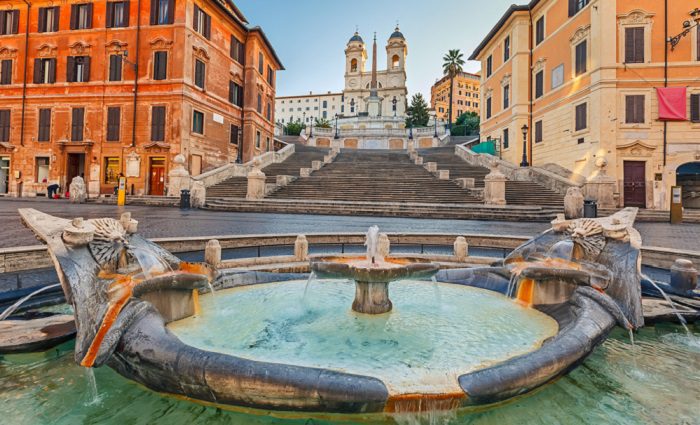
Piazza di Spagna | Piazza del Popolo | Piazza del Campidoglio
The piazza or square is the pulse of any Italian city neighborhood or provincial town. Indeed, the neighborhood piazza is the place to hang out, people watch, or just grab a coffee. Rome naturally has no shortage of iconic piazze (multiple squares, of course).
We’ll start with Piazza di Spagna or Spanish Steps. Historian Gil Smith tells us the square has been a favorite haunt of visitors to Rome since the Grand Tour’s heyday. Home to the Spanish Steps, Trinità dei Monti Church, and Barcaccia fountain, Piazza di Spagna is also the gateway to luxury shopping.
Next, we have Piazza del Popolo. It dates to a 1530s urban planning project. Art historian Alta Macadam tells us it once marked a major entry point into Rome for travelers. Today this massive square is a focal point for demonstrations and celebrations.
In fact, you’ll find a huge Egyptian obelisk from the 13-12th centuries BC in the center. There are two 17th-century baroque churches along with the Church of Santa Maria del Popolo.
What’s cool about this church? Inside you’ll see artistic and architectural highlights from the likes of Bramante and Caravaggio. The lesson? Enter any church you can since you never know what art treasure you might find!
Gracing the Capitoline, one of Rome’s fabled seven hills, is Piazza del Campidoglio. While St. Peter’s and the Vatican is the religious center, this square is the city’s secular and civic heart. The current layout is the work of none other than Michelangelo. In the 16th century, Michelangelo designed both the square and surrounding buildings of the Capitoline Museums.
But there are countless others across the city—go find your favorite!
How to get to: Spanish Steps, Piazza del Popolo, and Piazza del Campidoglio
8. Trevi Fountain
Nicola Salvi | Rococo | Movie Set
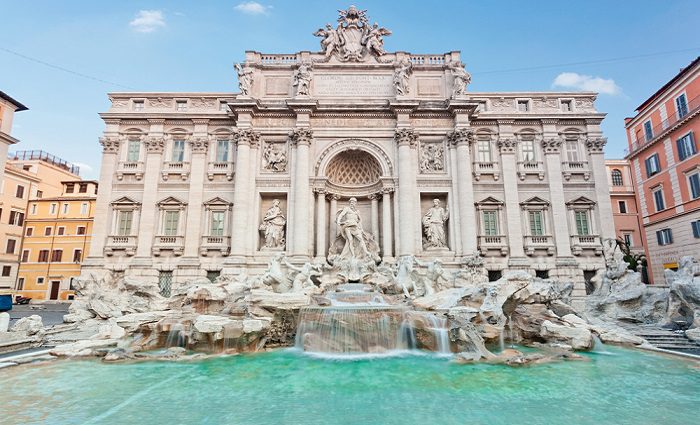
Compared to many of the artists and architects discussed here, Nicola Salvi did not have a prestigious career. But I think we can all agree that being responsible for the Trevi Fountain counts for something.
Indeed, few fountains worldwide are as recognizable or beloved as the Trevi. This elaborate Rococo fountain gracing the façade of the Palazzo Poli dates to the mid-18th century. Historian Jean Castex explains that Salvi died before the project’s completion. Thus, his friend Pietro Bracci is responsible for the sculptures like that of Neptune in the center.
The Trevi is a popular backdrop for movies like the iconic scene in Federico Fellini’s La Dolce Vita. Don’t forget to bring a few coins to toss in as you make a wish!
How to get to Trevi Fountain
7. Roman Forum
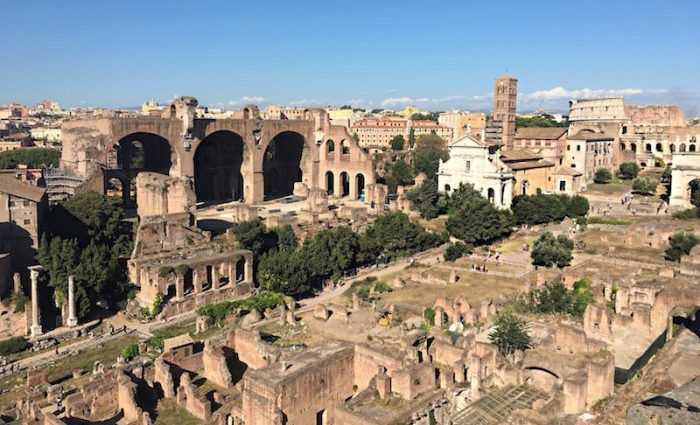
Marshy Beginnings | Republic to Empire | Civic Space
There’s no better place to chart ancient Rome’s evolution from republic to empire. In fact, what started as a marshy area between the Capitoline and Palatine hills became the center of Roman public life. Furthermore, art historian Penelope J.E. Davies explains how the Forum changed as Rome’s fortunes evolved.
For instance, the Forum’s early years featured a hodgepodge of businesses, food stalls, and public buildings. However, Davies tells us by the 2nd century BC, when Rome conquered vast parts of the Mediterranean, the Forum became more dignified. Thus, instead of street vendors, fancier businesses appeared alongside monuments.
But even in the heyday of the Roman Empire, the Forum remained a major civic space. For example, art historian Maggie Popkin says Roman emperors made sure to hold ceremonies and build or restore monuments and public buildings in the Forum. It became ancient Rome’s popular downtown situated next to the most happening events at the Colosseum.
Not ready to book a tour? Find out why a Colosseum tour is worth it!
6. Borghese Gallery and Gardens
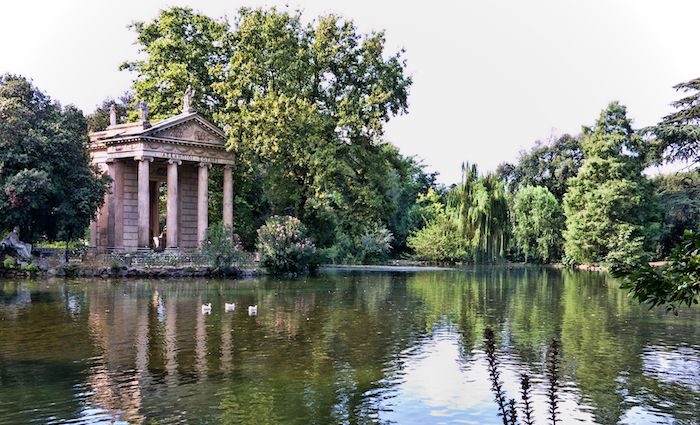
Borghese Family | Park | World-Class Art
Not many cities combine a beautiful park with a world-class art museum. But in Rome, you’ll find that very combination in the Borghese Gardens. This vast park is made up of the estates of the Villa Borghese, Villa Giulia, and the Pincio gardens.
The Borghese are among the leading names in Rome’s history. For example, art historian Loyd Grossman says the family line produced popes and other influential leaders in Rome and beyond. The villa and park are the brainchild of Cardinal Scipione Borghese, nephew of Pope Paul V.
The Borghese Gallery housed in Scipione’s villa where you’ll find numerous artistic treasures created by sculptors like Bernini and Antonio Canova. Heading to the Borghese Gallery? Read more on the museum’s must-see art!
5. The Pantheon
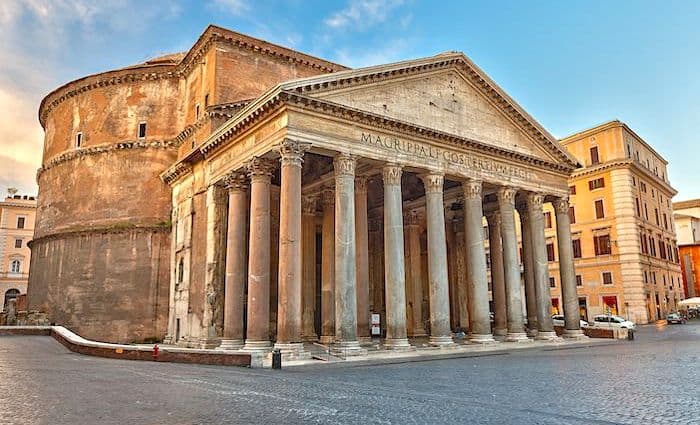
Agrippa & Hadrian | Trendsetter | Marvel
The temple-turned-church dates to the reign of Emperor Hadrian in the 120s AD. Art historian Maggie Popkin explains that Hadrian actually built over Marcus Agrippa’s earlier 27 BC version.
Moreover, scholar George H. Sullivan believes the Pantheon might be one of—if not the—best-preserved building from all antiquity!
And just maybe you’ll appreciate that once you’ve finished admiring this architectural marvel. Indeed, it is stunning to walk through the massive entrance to look up at the largest unreinforced concrete dome in the world.
The Pantheon is one of the great trendsetters in the world of art and architecture. For instance, it is the inspiration behind Brunelleschi’s famous dome for the Duomo of Florence. In other words, you’d be hard-pressed to name a more influential building in the realm of architectural history.
If you’d prefer to leave the planning to the experts, check out our Skip-the-Line Pantheon Guided Express tour.
How to get to the Pantheon
4. St. Peter’s Basilica
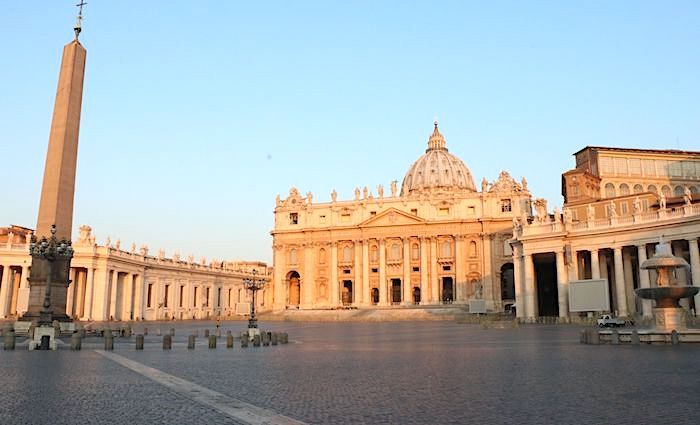
Microstate | Bernini’s Colonnade | Michelangelo’s Dome
You won’t face any border formalities, but a visit to Vatican City means crossing an international border into the tiny sovereign country. However, no European microstate boasts the artistic and architectural riches of the Vatican, beginning with St. Peter’s Basilica.
Like a giant hug, a curving colonnade designed by Gian Lorenzo Bernini embraces St. Peter’s Basilica. In fact, this magnificent basilica is the largest church in Italy, the spiritual center of the Catholic Church, and an artistic treasure. (If you’re slightly confused, the largest cathedral in Italy is Milan’s Duomo, but this is the largest church.)
Indeed, St. Peter’s is covered with marble, gold, and masterpieces like Michelangelo’s La Pietà. And crowning it all is the dome built by Michelangelo. In fact, art historian Alta Macadam tells us the dome is over 440 feet high and was not completed in Michelangelo’s lifetime. Finally, today you can climb over 500 steps for a commanding view of Rome—one of the best things to do on your first (or repeat) trip to Rome!
Not ready to book a tour? Check out our guide to St. Peter’s Basilica for more info.
3. Vatican Museums Art Collection
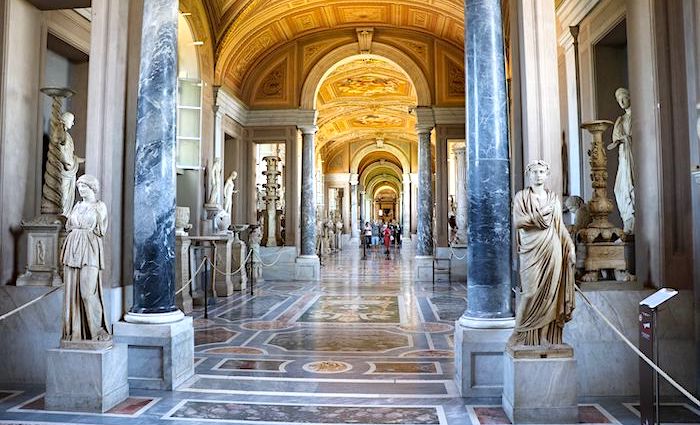
Papal Palaces | Eclectic Collection | Massive
The Vatican City boasts one of the world’s great art collections. Housed in several former papal palaces built for Renaissance popes like Julius II and Sixtus IV, the Vatican Museums is a can’t-miss attraction.
What you’ll find is an eclectic mix of art from antiquity to a smaller modern collection. Moreover, highlights include classical statues in the Pio Clementino Museum and Renaissance art in the Pinacoteca. It’s here you’ll find the famous Belvedere Torso, a collection of past popes’ carriages and cars, a 25-foot marble bathtub, Raphael’s School of Athens, and so much more.
The collection is exhibited along more than 4 miles of corridors! In other words, please make a game plan to get the most out of a visit to the Vatican. And lucky for you, we have you covered with some top-rated Vatican tours!
Not ready to book a tour? Check out our Vatican Guide for more info.
2. The Colosseum
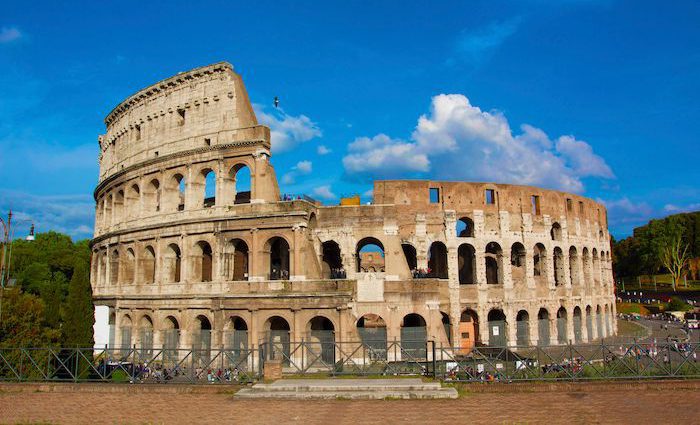
Gladiators | Big Events | Roman Empire
Is there a monument more synonymous with Rome than the Colosseum? Probably not. The Colosseum is the hottest ticket in town and has been so for over 2,000 years!
Art historian Nathan Elkins tells us no monument embodies the wealth and power of the Roman Empire more than the Colosseum. People and exotic animals from across conquered lands entered this legendary Roman arena to battle for life and limb. Additionally, the Roman poet Martial described audiences enthralled by the sight of animals who came from as distant as present-day Iran and Scotland.
When you think of the Colosseum, you probably imagine gladiators and gladiatorial combat. While certainly a major part of the Colosseum’s history, the arena hosted other events like mock-naval battles. In its heyday, over 60,000 people witnessed events at the Colosseum!
Now the building is but a shell of its former self, but reconstruction efforts now allow visitors a change to walk onto the Arena Floor and imagine spectators cheering down at them. It remains an active archeological site today with more areas underground still being unearthed.
Want to learn more about the Colosseum? Check out our History of the Colosseum and Gladiatorial Games!
Not ready to book a tour? Find out why a Colosseum tour is worth it!
1. The Sistine Chapel
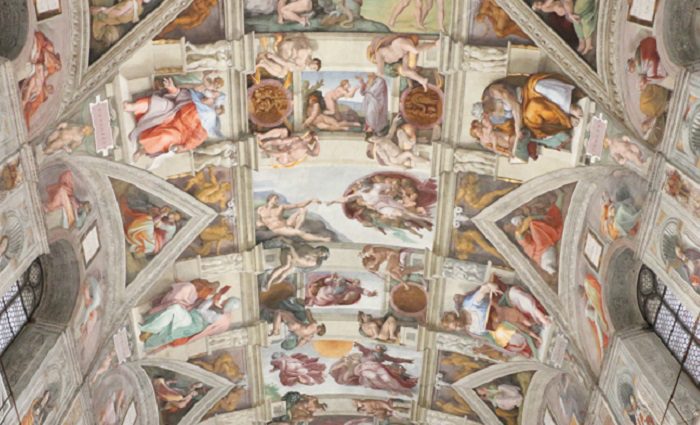
Michelangelo | Sixtus IV | Masterpiece
Limiting this list of famous art and architecture in Rome at 19 entries is tough. Each is undoubtedly a priceless treasure to see on your tour of Rome—and there are many more we would love to include. But we must close our list with the Sistine Chapel. Why?
Let’s start with an observation. For me, it feels as though a visit is like finding your birthday presents early. There is something quite exclusive and forbidden about your first glance at this masterpiece. Even after walking past miles of magnificent art on display in the Vatican Museums, getting to this sacred chapel just feels different. Moreover, there’s something to be said about visiting a masterpiece where you’re not allowed to snap a selfie.
On a more detached note, we’re concluding with the Sistine Chapel for two reasons. First, the art adorning this chapel is widely regarded as among the finest ever created in history. Finally, what you see is largely the product of not just the greatest artist of his age, but arguably of all time: Michelangelo.
And if that wasn’t enough, other artists involved like Botticelli and Perugino are also legendary. What they created for us remains one of the most celebrated and coveted artworks in the world.
Scholars like art historian Ian Chilvers argue Michelangelo’s creation is the culmination of Renaissance art. This massive chapel’s name derives from Pope Sixtus IV, who had it built in the 1480s.
Finally, we’ll mention that the Sistine Chapel boasts not one but two of the most famous works of art in the world: Michelangelo’s ceiling frescoes and his later work, Last Judgement. We simply don’t have the space to share any more accolades, so check out our thorough guide to the Sistine Chapel.

